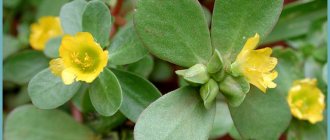Growing bacopa is a fascinating process that allows you to create grandiose (flowering) bushes without spending a lot of time and effort on gardening work.
Thanks to its small leaves and strong stem, bacopa feels great in the wind and is able to survive drought and low temperatures without damaging its formed appearance. You can use any soil for growing bacopa, the main thing is that it does not stick together due to dampness and allows the root system to breathe.
A little bit of lyrical history:
The desire for perfection pushes flower growers to unimaginable actions. So, ampelous bacopa came to us straight from the tropical and subtropical regions of Asia, Africa, and Australia...
A perennial, flowering bush, actively growing in width, began to gain popularity on all continents, captivating people with its charm. Ease of care and versatility in landscape design have made the flower indispensable for decorating gardens, squares and city streets, making our lives more beautiful.
Description of Bacopa:
- The plant blooms with white or purple flowers, about one centimeter in diameter;
- Propagated by seeds and cuttings;
- Loves a lot of light and warmth;
- Afraid of stagnant dampness;
- The stems are thin, creeping, and after pinching they send out lateral shoots, making the bush more magnificent;
- It overwinters in a dormant state at near-zero temperatures with minimal lighting.
At the beginning of its development, bacopa forms several main branches (usually three). They need to be pinched at 10 - 15 centimeters until the bush fluffs up to a state that satisfies you.
Bacopa flower
Bacopa inhabits the wet wetlands of the tropics of America, Africa and Australia. Her love for moisture remains in decorative growing conditions. Bright sunlight is needed for its abundant flowering, and moist soil for active growth of shoots.
Bacopa rosea
Small flowers cover the entire length of the shoots, which can grow up to a meter. Flowers in light, delicate shades - white, lilac, blue, violet, pink. Green or olive leaves are small, growing in pairs. Bacopa belongs to the plantain family.
Interesting to know! Other names for the plant are Vasora or Sutera.
The green beauty grows well both in open ground and indoors - on balconies and verandas all summer. The plant is unpretentious, active and healthy growth is maintained by observing only a few conditions:
- The lighting should be plentiful; the flower should receive a dose of direct sunlight every day. It should be planted in open ground in sunny and unshaded areas. Balconies and loggias also need good lighting.
- Water abundantly, but the soil should allow water to pass through well and not retain moisture in the roots of the flower. The soil in the pot should be constantly moist. For root respiration, it is important to loosen the soil after each watering, both in the pot and in the flowerbed.
- Fertilizer is necessary when propagating a flower, so that the roots become stronger during the period of active growth of greenery.
- The only requirements for soil are looseness and airiness. It should allow moisture and air to pass through well.
It is important to know! If there is a lack of light, bacopa will not bloom, although it will continue to grow. Many flower lovers are unknowingly in empty anticipation.
Diseases and pests with proper care practically do not affect the flower. Most often, the plant gets sick during wintering in room conditions, when the earthen clod is allowed to dry out, the temperature rises, or the humidity level decreases.
How to preserve balsam at home in winter
Impatiens feel great both in the flower garden and on the windowsill. But garden flowers overwinter worse in apartment conditions, so it is advisable to cut fresh cuttings from a balsam bush. To do this, select a strong plant, break off several branches 5-6 cm high and place them in water. After roots appear, plant the cuttings in separate containers. Water moderately and spray regularly, because... balsam is often affected by spider mites. As they grow, transfer the plants to larger pots if necessary.
Wintering
Bacopa ampelous - growing and care at home
For proper wintering, all shoots of the plant are removed almost to the root. A bush is dug up from the garden and transplanted into a pot (bacopa will not tolerate frost). Place the pot in a room where the temperature will constantly be no higher than 10 degrees. Watering is reduced to a minimum; it is advisable that the earthen ball dry well after a warm period before the next watering. Any fertilizing, increased temperature, and abundant light are excluded.
Bacopa is a perennial bush, so with proper winter care it can live wonderfully in a pot for several years
Such wintering will preserve the plant as much as possible and in the spring after awakening it can continue its growth and flowering in the garden or on the balcony.
If the temperature is not suitable for sleep, the plant loses its decorative effect, the shoots stretch into thin threads, the leaves fade and thin out. In this situation, you can take cuttings from last year’s bush and get many new healthy plants ready for planting in the spring.
Reproduction
Bacopa is quite easy to propagate. A new plant can be obtained from seeds, cuttings or layering.
Ampel verbena - growing in a pot, planting and care
There are general rules for growing seedlings that need to be taken into account:
- Bacopa seedlings, unlike an adult bush, do not like direct sunlight. Abundant light can cause the death of young seedlings.
- The soil should always be moist, but without water accumulating in the bottom of the pot.
- When growing in a greenhouse - under film or glass, it is important to accustom the plant to home conditions. In the future, with active growth, you need to take the young bushes out into the open air. Without hardening, the plant will die after transplantation.
- Bacopa should be planted in open ground or taken out into a pot in the open air no earlier than mid-May. A decrease in temperature or frost on the ground is detrimental to the delicate root system.
- During rooting and sowing seeds, it is important to maintain the temperature of the soil in the pot at 20 degrees. This is a heat-loving plant.
Bacopa - growing from seeds
It is important to know! Growing bacopa from seeds should begin in March. The germination rate of the seeds is quite high; problems often occur during further care of the sprouts.
To grow a healthy and beautiful plant from bacopa seeds, you need:
- Mix peat and sand in equal parts as soil.
- Seeds should be sown by slightly pressing them into moist soil.
- Cover the bowl with film or glass.
- Place in a warm place, in diffused light.
The seeds wake up after 14 days. The seeds germinate completely after four weeks.
Growing bacopa from seeds in peat pots
At this time, it is important to maintain the temperature at least 23 ° C and moisten the soil. Fertilizing should be done alternately with diluted organic and mineral fertilizers.
Cuttings
The most favorable period for cutting Bacopa is in the summer - the end of August, for the winter procedure - January-April.
Growing bacopa by cuttings requires preparation of material for planting.
The shoots can be divided into several parts; they will take root well. There should be at least two nodes on the cutting - one will be the beginning of roots, the other - leaves and shoots.
- On cut cuttings, you need to remove flowers, unopened buds, and lower leaves.
- For more reliable rooting, the tips of the cuttings are treated with root.
- Root in a damp mixture of sand and peat, immersing the lower node in the ground.
- Cover the top with film or glass.
The cuttings take root quickly; after two weeks you can evaluate the growth of the root system. Warmth not lower than 23 degrees, light and moisture are all you need for successful cuttings. It is important not to forget to fertilize the cuttings with diluted organic matter and mineral supplements, and harden the seedlings.
It is important to know! After 2-3 pairs of leaves appear, the shoot is pinched to obtain a lush and branched bush.
The active growth of new leaves and shoots with flowers indicates that propagation of bacopa by cuttings was successful and the seedlings are ready for planting in open ground or flowerpots.
Layerings
This is the fastest and most reliable method of obtaining a healthy and already flowering young plant.
During active shoot growth, place a pot with nutritious, moist soil next to the mother plant. Layers just need to be placed on top of the soil and secured with a metal or plastic pin.
Periodically checking for the presence of roots, loosen the soil in the new pot and moisten it. After the appearance of new shoots or noticeable growth of rooted ones, the cuttings can be split off from the mother bush.
The good thing about this method is that the sprouts grow much faster due to nutrition from the mother’s branch. Also, a young bush grows immediately in the conditions of an adult flower and does not require additional feeding with fertilizers or hardening. You can grow by layering from the beginning of active growth of shoots.
3.Varieties:
3.1. Carolina bacopa - Bacopa caroliniana
A perennial, herbaceous, small-flowered plant with erect, abundantly branched stems at the base. The leaves are oval, glossy, green, sessile, arranged in opposite pairs. The flowers are blue, solitary, appear mainly in the upper part of the stems, reminiscent of forget-me-nots. This is one of the tallest types of bacopa, reaching 50 - 100 cm.
↑ Up,
3.2. Bacopa Monnieri or small-leaved - Bacopa monnieri
A perennial herbaceous plant with thick, powerful, often lodging stems with numerous lateral shoots. The leaves are sessile, green, glossy, oval or spoon-shaped, thick, juicy. Flowers adorn the plant in the summer months and appear on the tops of the shoots. Each flower consists of 5 round or slightly oblong white, blue or lilac petals. The plant is believed to improve memory and learning ability, relieve anxiety and stress, and is also used as a tonic supplement.
The green mass of this variety is used in drugs that help with Alzheimer's disease.
↑ Up,
3.3.Bacopa cordata
A perennial, evergreen, large-flowered ground cover with thick, lodging stems, the height does not exceed 10 - 20 cm. The leaves are small, dark green, heart-shaped, with large teeth along the edge of the leaf blades. The leaves are arranged in opposite pairs on short petioles. The flowers are quite large, attractive, white, pink, lilac, purple. Flowering is abundant and long lasting.
↑ Up,
3.4.Bacopa diffuses
Attractive herbaceous plants up to 20 cm high with abundantly branched, thick stems that can reach 1 meter in length. The leaves are dark green, up to 2.5 cm long, rounded, on short petioles. The leaf blades have large teeth along the edge. Flowers appear mainly in the warm season on the tops of shoots; they can be simple or double, painted in white, cream, pinkish or lilac. The plant is often grown as an attractive ampelous plant, forming a profusely flowering, dense ball.
↑ Up,
3.5.Madagascar bacopa - Bacopa madagascariensis
An evergreen perennial with strong, thick, erect, slightly branched stems 1-3 m high. The leaves are light green, fleshy, oblong-oval in shape. The leaf blades are entire, can reach a length of 1 - 3 cm. The flowers are funnel-shaped, with blue or purple petals fused to each other.
An interesting feature of the plant is that it can grow half in water, while the upper part of the shoots is in the air. This variety is often used in aquarium farming.
↑ Up,
3.6. Woolly bacopa or Lanigera - Bacopa lanigera
An attractive evergreen plant, the main distinguishing feature of which is the presence of very dense, but short, light pubescence on the stems and leaves. The stems are erect, thick, succulent, weakly branched - side shoots often appear at the base of the plant. The leaves are glossy, green, ovate, arranged in opposite pairs, sessile. The leaf blades are entire, reaching a length of 2 - 3 cm. The flowers are solitary, axillary, funnel-shaped, with wide pinkish or purple petals.
In its natural habitat, it is half submerged in fresh water. When grown at home, it serves as a good aquarium decoration.
↑ Up,
Ampelous Bacopa: planting and care
Ampelous bacopa flower - white, blue, double and spreading varieties
Frosts and a sharp drop in temperature will leave no chance for young seedlings to take root. Bacopa has very delicate roots that grow almost on the surface of the soil, so they will be the first to suffer. Once the roots are damaged, they cannot be restored. It will be possible to save the stem and try to root it again.
Ampelous bacopa
Before planting, seedlings must be hardened off. For several days before planting, you need to leave the pots outside in the place where the future bush will grow - a balcony or veranda.
To plant in a pot, you need to prepare the soil. A mixture of peat, sand and turf soil in equal parts will be an excellent soil for an hanging flower. The pot must have a drainage hole. The expanded clay layer is at least 4-5 cm; stagnation of moisture leads to rotting of the root system.
Important! After planting the seedlings, you can feed them again so that the roots take root faster and the plant begins to actively grow.
After passing the rehabilitation period (14 days), the plant can be pinched, forming it in the form of a bush, weaving or cascading flower.
Bacopa goes well in the same pot with other hanging flowers, creating compositions of incredible beauty.
Bacopa - planting and care in the flowerbed
Caring for Bacopa in the garden is just as easy and simple. When choosing a location, it is important that it is well lit and protects the flower from the wind. In open ground, the plant spreads or bushes, depending on how often you pinch and trim it.
If the soil in the garden plot is not very nutritious, you need to fertilize the soil before planting seedlings. This will provoke active growth and flowering of the future beauty. After planting, caring for bacopa in the garden is simple:
- Abundant lighting will provoke it into active flowering, which occurs in waves in this exotic plant. The inflorescences ripen, open and wither almost simultaneously. After a short break and meager flowering, the next wave of even more lush flowering begins.
- Watering should be frequent and plentiful.
- After watering, be sure to loosen the soil to allow the roots to breathe. This must be done very carefully, not forgetting that the roots of bacopa are superficial and very fragile.
- Weeds clog the plant; it is important to get rid of them in the early stages exclusively by hand weeding.
Until the very first frost, Bacopa will continue to grow and bloom, and then it will be ready to migrate to a pot for wintering. Such a hardened and strong plant will make excellent seedlings for next year. And if Bacopa is given a full-fledged winter sleep, then this bush will again become a full-fledged decoration of the garden.
How to preserve chrysanthemum at home in winter
Heat-loving varieties of chrysanthemums - spherical (multiflora), dwarf, European hybrids and some others - need to be wintered indoors. It is also worth digging up freshly planted plants that may not survive frosts for the winter. Before frost, cut the bushes at a height of 10-15 cm from the ground and dig them out of the ground along with a lump of soil. Then you can put them in wooden boxes, sprinkled with soil, or plant them in shallow containers.
Is it necessary to pinch Bacopa?
Pinching and pruning Bacopa stimulates its active growth and flowering. This procedure begins to be carried out even on seedlings.
It is important to know! If the flower is regularly pruned, the bush will send out lateral and root shoots more intensively.
Pinching is done so that the shoot awakens its lateral buds. The bush will be thick and dotted with flowers. Flowers grow not only on the axils of the shoot tips, so pinching will not harm the flowering at all, but will only stimulate it.
If ampelous Bacopa is planted, cultivation should be accompanied by pruning. It is necessary to cut off at least 1/3 of the length of the shoot. Cut shoots will become excellent material for further propagation. When forming the decor, you can leave several shoots long and cut others, creating interesting compositions.
A ball is most often formed from ampelous bacopa
On the soil, unpruned Bacopa will spread its shoots along the ground, but it is still worth pinching the beauty - the shoots will be thicker and bloom more luxuriantly.
Diseases and pests
Among the diseases of Bacopa, the most common are gray mold and fungus. They arise due to several flower bushes planted too densely or waterlogging of the soil.
Yes, Bacopa loves moisture very much, but if it does not evaporate and sunlight does not reach the soil due to dense greenery, fungi and gray rot appear. You should thin out the thick stems to open up the soil, and don’t forget to loosen it. It won’t hurt to treat the shoots with a fungicide.
Pests occur most often during indoor wintering, when the humidity is low and the temperature is above 15 degrees. There is enough heat and dry air for the appearance of sucking pests - aphids, whiteflies and spider mites. If a plant overwinters in not very suitable temperature conditions, it is important to inspect it for timely detection of pests and control them. Parasites can be destroyed by 2-3 acaricide treatment procedures.
Bacopa is a wonderful decoration. In the garden it will create a flowering carpet; on balconies or loggias it will act as a hanging carpet - an avalanche of long flowering vines. Bacopa, which does not require much effort to care for and grow, will delight its owner with greenery and color until the cold weather.
How to preserve Shabot cloves at home in winter
Most carnations tolerate frost easily, but Chabot is an exception, so it is usually grown as an annual. From July to September the plant actively blooms, but you can preserve the heat-loving beauty until spring. The easiest way is to trim the carnation bushes, transplant them into separate pots and store them in a cellar or basement. Occasionally the soil needs to be watered to prevent drying out. At the beginning of March, place the plants in a bright room and increase watering. In April-May, transplant the surviving bushes into a flower bed.
You can try cutting carnation cuttings and rooting them following the example of gatsania, which we talked about above. Choose strong shoots at least 5 cm long, remove the lower pairs of leaves. Until spring, water the cuttings moderately and inspect them for pests. Plant in a flowerbed in spring when the soil has warmed up well. The flowering of young Shabot carnations will be more modest, unlike the mother plant, but you will be able to enjoy it earlier than usual.











